
News
Vision Hydrogen Weekly丨Hyundai Motor Group and Rolls-Royce develop hydrogen-powered aircraft; Shenzhen, Puyang, Jiangxi Province and Sichuan Province release hydrogen energy policies; Vision Group supports the first hydrogen loader in China
【Policy】18 subsidy policies, electrolysis to hydrogen valley electricity ratio of more than 50% exempted from the basic electricity fee! Shenzhen Action Plan for Innovative Development of Hydrogen Energy Industry 2022-2025) (Draft for Comments)
On July 18, Shenzhen Development and Reform Commission issued the "Shenzhen Hydrogen Energy Industry Innovation Development Action Plan 2022-2025) (Draft for Comments)".

The highlights are as follows.
By 2025, the scale of the hydrogen energy industry will reach 50 billion yuan. Demonstrate no less than 1,000 fuel cell vehicles, build no less than 10 hydrogen refuelling stations, no less than 100 sets of distributed energy, combined heat and power supply and standby power applications, and demonstrate no less than 1-3 hydrogen energy vessels, no less than 100 units (sets) of hydrogen energy drones and emerging and crossover areas such as shared bicycles and life and health.
Accelerate the construction of hydrogen energy standard system. Provide financial support of up to RMB 1 million, RMB 500,000 and RMB 300,000 to units that have been awarded international standards, national standards and industry standards that have been publicly released.
Focus on cultivating innovative hydrogen energy enterprises. Focusing on the key areas of hydrogen energy such as advanced hydrogen production and storage, core materials and components of fuel cells, power stacks and systems, distributed power generation, backup power supply, and drones, a number of enterprises in the field of hydrogen energy with high technological content, good development prospect, fast growth rate and more mature technology will be cultivated. For the implementation of industrialisation projects, a maximum subsidy of RMB 15 million will be given according to 20% of the total project investment.
Reduce the cost of hydrogen for the end-use of the hydrogen energy industry. Support the production of hydrogen by electrolysis of water in hydrogen refuelling stations, and provide funding for 30% of the purchase cost of hydrogen production equipment in the stations, up to a maximum of RMB 2 million. For hydrogen production and hydrogen refuelling integrated stations, if the price of hydrogen refuelling is RMB 35/kg or less in 2022-2023, and RMB 30/kg or less in 2024, the electricity price for electrolysis of water in the station will be implemented as the electricity price for storage and cooling. Power plants are allowed to use their surplus power generation capacity during low valley hours to build interruptible power electrolytic water hydrogen production projects at their plants or nearby. By 2024, the cost of hydrogen use will be reduced to less than 30 RMB/kg.
Information source: Shenzhen Development and Reform Commission
【News】Shanghai: Existing achievements will be integrated and applied to high-power hydrogen fuel cell inland waterway vessels
On July 13, the Shanghai Municipal People's Government issued the "Response to Proposal No. 0055 of the Fifth Session of the 13th Municipal Committee of the Chinese People's Political Consultative Conference" (hereinafter referred to as "Response").

The Reply states that the proposal on "Proposals on electrification of inland and offshore vessels" has been received and, after study, the response to the handling situation is as follows, in which the hydrogen energy aspect states that
I. Promote the application of high-power hydrogen fuel-powered cell ships
At present, Shanghai has a relatively complete hydrogen energy industry chain and scientific research foundation. For example, a number of core technologies have been broken through around core materials and components such as metal bipolar plates for fuel cells, high-efficiency membrane electrodes, low-platinum catalysts and membrane humidifiers; the next step will be to integrate the existing research results and apply them to high-power hydrogen fuel cell inland waterway ships, to overcome technical problems such as high-power ship hydrogen fuel cells, power systems, shipboard hydrogen supply, filling and hydrogen storage, and to meet the long life, high safety and stability of the electric reactor system requirements.
New financial support for new energy vessels in the city
In the new round of Measures to be released by the city, learning from the experience of Guangzhou and other cities, the new energy ship projects will be subsidised at 30% of the cost of the ship's power system (including battery and electric propulsion system) within certain conditions, with 40% of the subsidy given to operating passenger ships.
Information source: Shanghai Municipal People's Government
【Policy】Jiangxi Carbon Peak Implementation Plan: Actively Promoting the Application of Hydrogen-powered Vessels at Poyang Lake
On July 18, the People's Government of Jiangxi Province issued the "Jiangxi Province Carbon Peaking Implementation Plan" (hereinafter referred to as "the Plan").
The Programme points out that, in order to thoroughly implement the Party Central Committee and the State Council's major strategic decision on carbon peaking and carbon neutrality, fully implement the Implementation Opinions of the Jiangxi Provincial People's Government of the CPC Jiangxi Provincial Committee on the complete and accurate implementation of the new development concept of carbon peaking and carbon neutrality, and solidly promote the province's carbon peaking action, this programme is formulated. Among them, the hydrogen energy aspect states that
1. Promote carbon peaking in the iron and steel industry. Deepen the structural reform of the supply side of the iron and steel industry, strictly implement the policy of capacity replacement, strictly prohibit the illegal addition of new production capacity, eliminate backward production capacity in accordance with the law and optimize the stock.
2. Promote the petrochemical and chemical industry to reach the carbon peak. Encourage petrochemical enterprises and chemical parks to build integrated energy management systems to achieve energy system optimization and tertiary utilization. Strict project access, implement national policies to control petrochemical and coal chemical production capacity, promote the integration of refining and chemical transformation, encourage enterprises to "reduce oil and increase chemical production", and effectively resolve structural surplus conflicts. Increase the use of hydrogen-rich raw materials, increase the proportion of low-carbon raw materials, and promote the lightweighting of chemical raw materials.
3. Promote the low-carbon transformation of transport equipment. Expand the application of new and clean energy sources such as electricity, hydrogen, natural gas and advanced bio-liquid fuels in the transport sector.
4. Accelerate the research and development and application of green and low-carbon technologies. Focus on deepening research in key areas such as large-scale use of renewable energy, energy conservation, hydrogen energy, permanent magnet motors, energy storage and power batteries.
5. Strengthen the attraction and cultivation of carbon neutral talents for carbon peaking. Encourage key universities in the province to offer majors in energy conservation, energy storage, hydrogen energy, carbon emission reduction, carbon market, etc., build a talent training mechanism that is compatible with green and low-carbon development, and introduce and cultivate a group of specialized talent teams for carbon peak and carbon neutral.
Information source: Jiangxi Provincial People's Government
【Industry】Foreign Ministry Spokesman Zhao Lijian "enlightens" the world about the Dachen Island hydrogen project
A few days ago, Chinese Foreign Ministry spokesman Zhao Lijian tweeted on Twitter, "A comprehensive hydrogen energy utilization demonstration project on east China's Dachen A comprehensive hydrogen energy utilization demonstration project on east China's Dachen Island was put into operation." with an English video report from Xinhua's Global Link "GLOBALink | Green hydrogen project in E China contributes to low-carbon development", introducing the State Grid Zhejiang Taizhou Dachen Island hydrogen energy comprehensive utilization demonstration project to netizens around the world, showing that Chinese enterprises represented by State Grid Zhejiang Power are exploring the construction of a new power system and using the island's "green hydrogen" project to help realize the "dual-carbon development". The project will showcase the practice of Chinese enterprises, represented by State Grid Zhejiang Electric Power, in exploring the construction of a new power system and using the island's "green hydrogen" project to help achieve the "double carbon" goal.
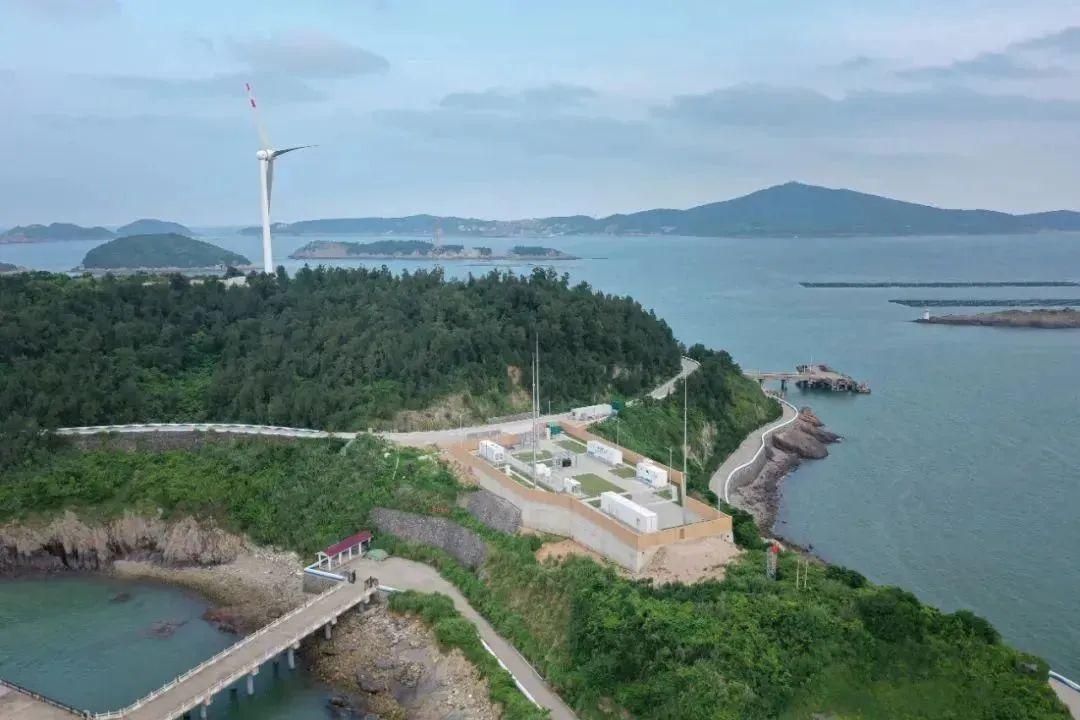
The hydrogen energy demonstration project on Dachen Island is the first "green hydrogen" comprehensive energy demonstration project on an island in China. The so-called "green hydrogen" is the hydrogen obtained from the decomposition of water using renewable energy, which achieves zero carbon dioxide emission from the source and is a pure green new energy source.
Dachen Island, with an annual average wind speed of 6.8m/s and 7,000 hours of effective wind energy per year, is blessed with wind energy resources. At present, there are 34 wind power generating machines with a total installed capacity of about 27 MVA, which can generate an average of more than 60 million kilowatt hours per year. The hydrogen energy comprehensive utilization demonstration project makes use of the abundant wind power on the island to produce hydrogen by electrolysis of water through proton exchange membrane technology, and constructs a "hydrogen production - hydrogen storage - fuel cell" combined heat and power supply system.
After the project is put into operation, it is expected to consume 365,000 kilowatt hours of surplus wind power on the island and produce 73,000 standard cubes of hydrogen per year, which can generate about 100,000 kilowatt hours of electricity and reduce 73 tons of carbon dioxide emissions.
Information source: Hydrogen Cloud Chain
【Policy】Sichuan Province Fuel Cell Vehicle Demonstration Incentive Declaration Launched
On July 15, the Sichuan Provincial Department of Economics and Information released the Notice on the Declaration of New Energy and Intelligent Vehicle-related Policies and Incentives (hereinafter referred to as "the Notice").
In terms of hydrogen energy, the Notice states that
(i) Scope of support
(ii) Hydrogen fuel cell vehicle demonstration incentives. To support cities (states) with conditions to carry out hydrogen fuel cell vehicle demonstrations focusing on public transport, logistics and other areas.
II. Basic conditions
(ii) Hydrogen fuel cell vehicle demonstration incentive.
1. The declaring unit is the competent department of economy and information technology of the city (state).
2. The declaring city (state) should invest in 10 or more hydrogen fuel cell vehicles and build hydrogen refuelling infrastructure. For cities (states) that have already obtained this support in previous years, only the incremental part will be supported if they invest in new hydrogen fuel cell vehicles or build additional hydrogen refuelling infrastructure on the basis of the previous demonstration.
3. Comply with the laws and regulations on production safety and environmental protection during the demonstration period, and no major safety and environmental protection accidents have occurred.
III. Declaration process
(3) The hydrogen fuel cell vehicle demonstration incentive shall be declared directly to the Department of Economy and Information Technology by the competent department of economy and information technology of the city (state) after collecting and summarizing the local demonstration situation.
Information source: Sichuan Province Economic and Information Department
【Industry】8 minutes of hydrogen filling, 6 hours of range! The first domestic hydrogen loader rolls off the production line
On July 11, a 50-type GRSD958HEV heavy-duty version of hydrogen loader, which is supported by Xiongtao Hydrogen Xiong, was successfully test-run off the production line in the New Energy Industrial Park of Xinjiang Economic and Technological Development Zone New Materials and High-end Equipment Industrial Park, which is also the first hydrogen loader in China.
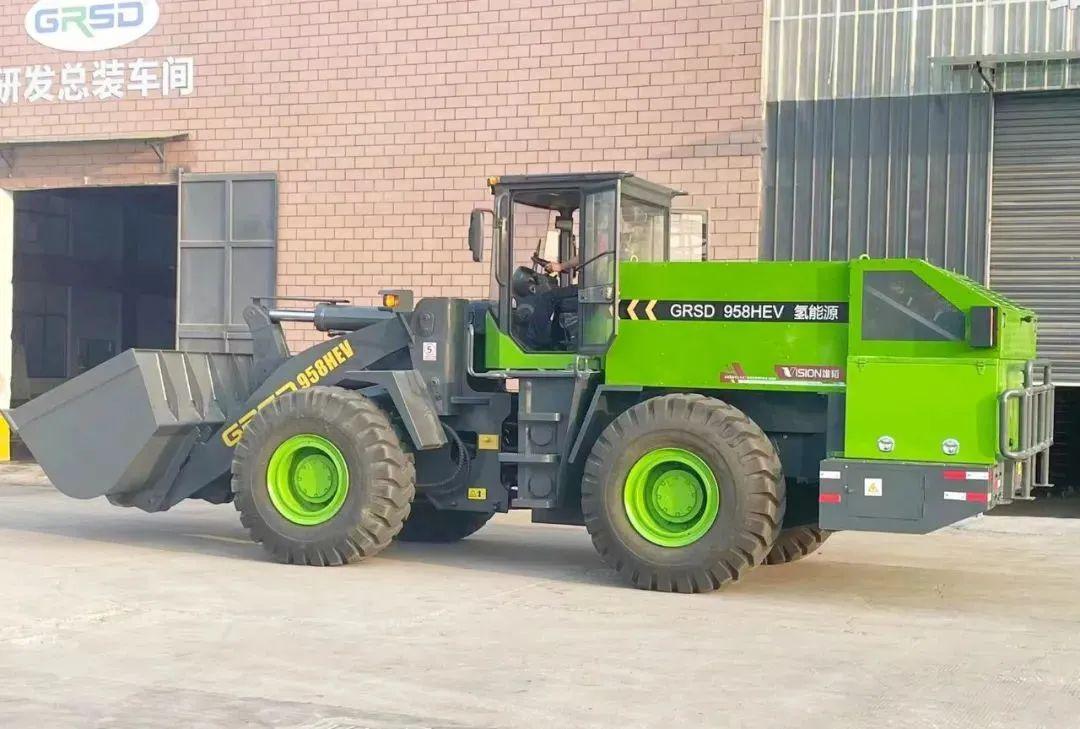
This hydrogen loader is the main tonnage of the heavy duty loader market with a rated load capacity of 5 tonnes. Equipped with the Vision HydraV Fuel Cell Co., Ltd. and 840L hydrogen bottle, the hydrogen refuelling time is less than 8 minutes and can operate continuously for 6 hours.
The Vision HydraV Fuel Cell Co., Ltd. features low energy consumption, low noise and high efficiency, which can achieve zero emission, zero pollution, green energy saving and environmental protection. It is a powerful helper to achieve green and low-carbon operation in feeding, loading and levelling in mines, coal mines, steel and other enterprises' stockpiling places.
Information source: Vision HydraV Fuel Cell Co., Ltd.
【Dynamic】The 359th batch of MIIT: Vision HydraV Fuel Cell Co., Ltd. supporting three
Recently, the Ministry of Industry and Information Technology (MIIT) made a public announcement on the proposed content of the "Road Motor Vehicle Production Enterprises and Products Announcement" (359th batch). There are 21 vehicle enterprises and 37 product models in the fuel cell vehicle category, of which, Xiongtao Hydrogen Xiong supports three vehicles.
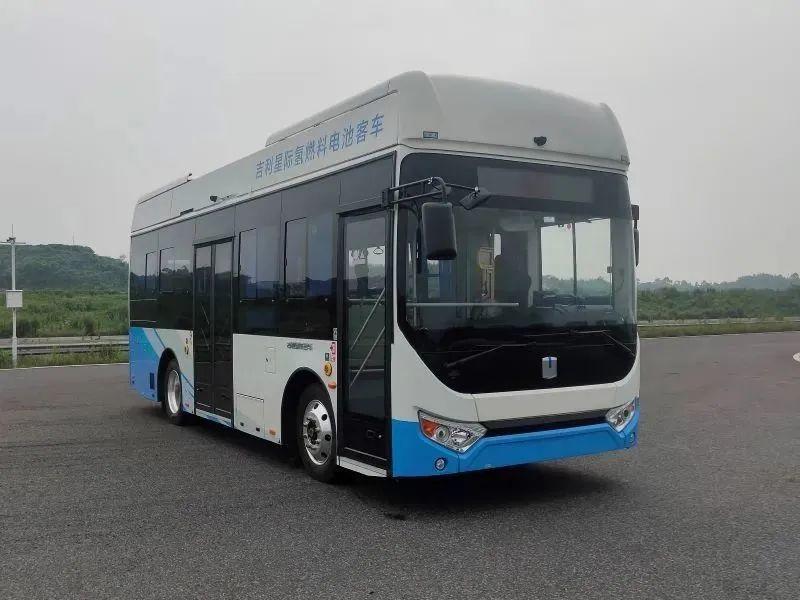
Remote Fuel Cell City Bus Model No. DNC6850FCEVG34
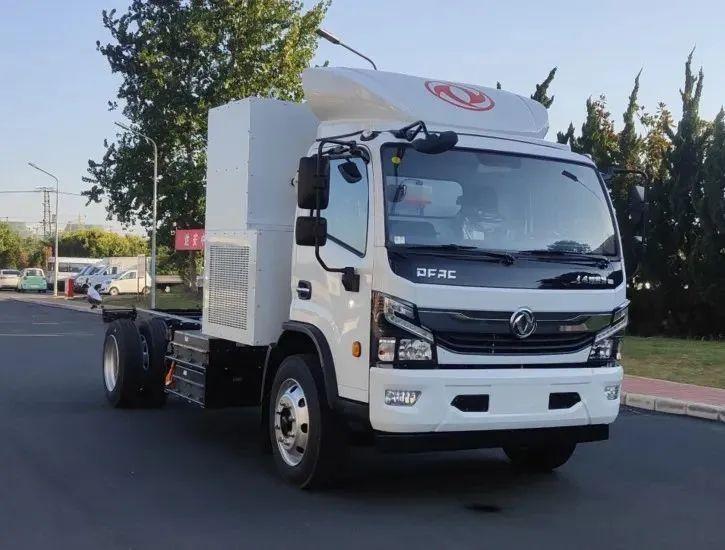
Dongfeng fuel cell truck chassis Model No. EQ1131KACFCEVJ4
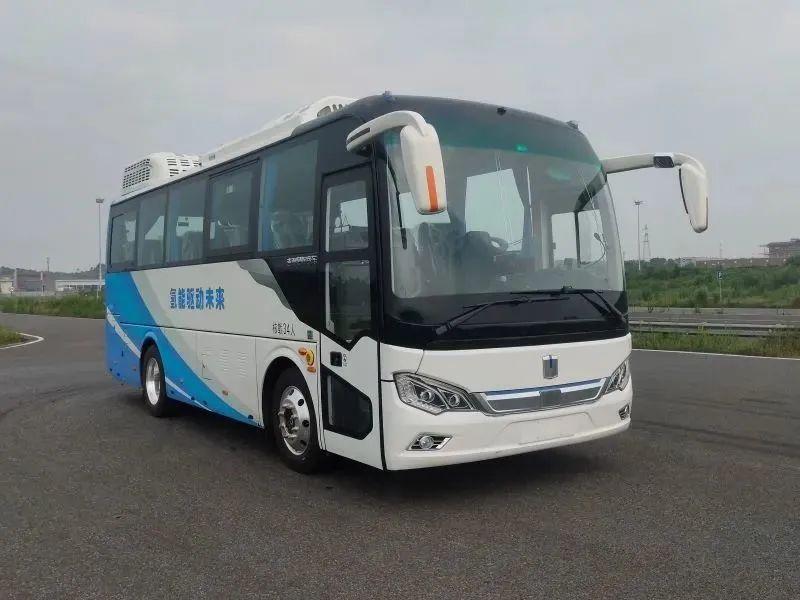
Remote Fuel Cell Bus Product no. DNC6820FCEV31
The 37 fuel cell products involved in the declaration have five types of product declarations, of which the highest proportion is for automotive chassis, ranking first with 12 models; fuel cell sanitation vehicles and heavy trucks both have 8 models; fuel cell buses have 6 models; and fuel cell logistics vehicles have 3 models.
Information source: Shenzhen HydraV Fuel Cell Co., Ltd.
【Policy】 Subsidy for hydrogen refuelling stations up to 10 million yuan! Henan Puyang introduces an upgraded policy for the hydrogen energy industry
On July 16, at the 2022 China Hydrogen Energy Industry Development (Puyang) Summit, the city released a 2.0 upgraded policy to support the development of the hydrogen energy industry to the guests, providing policy and financial support to the whole industry chain of hydrogen energy "production, storage, transportation, refuelling and use". These policies are "the largest in the province and the best around" in terms of subsidies.
Support for green hydrogen preparation enterprises. For enterprises whose ex-factory price of green hydrogen is not higher than the average ex-factory price of industrial by-product hydrogen and used for refilling at hydrogen refilling stations in the city, a subsidy of RMB 15 yuan per kilogram will be given in the first year according to the accumulated annual supply of hydrogen, and the maximum subsidy can be 5 million yuan.
Support for hydrogen energy storage and transportation enterprises. In terms of subsidies for hydrogen storage, a subsidy of 10% of the total actual investment in equipment (including software) is given to new hydrogen storage projects in high-pressure gaseous, low-temperature liquid, organic liquid and solid state, with a maximum subsidy of 6 million yuan for a single project. In terms of subsidies for hydrogen transportation, enterprises with more than 10 hydrogen transportation vehicles and engaged in the transportation of hydrogen produced in the city for foreign sales will be given an annual operating subsidy of RMB 2 yuan per kilogram, up to RMB 2 million, according to the actual annual transportation volume.
Support the construction of hydrogen refuelling stations. A one-time subsidy will be given to newly built, reconstructed and expanded hydrogen refuelling stations. For those stations with a daily hydrogen refuelling capacity of 500 kg or more, which are fixed and committed to operate continuously in the city for three years, a one-time subsidy will be given at 40% of the actual investment in construction (excluding land costs) after the completion of the acceptance and filing and the commencement of operation. In addition, the city also gives maximum support to the construction of hydrogen refuelling stations in terms of planning site selection and land procedures.
Subsidies for the operation of hydrogen refuelling stations. For hydrogen stations whose retail price does not exceed 35 yuan per kilogram, the subsidy will be 15 yuan per kilogram from 2022 to 2023 and 10 yuan per kilogram from 2024 to 2025, with a maximum subsidy of 2 million yuan per year per hydrogen station.
Information source: Puyang Municipal People's Government
【Dynamic】 EU approves hydrogen energy project supported by Daimler and Bosch
July 18 - According to media reports, the European Commission has approved a hydrogen energy project called IPCEI Hy2Tech to promote the competitiveness and economy of the EU. The project is said to have received a total of 5.4 billion euros (about US$5.4 billion) in funding from 15 EU countries and 35 companies, including Alstom and Daimler.
Other companies involved in IPCEI Hy2Tech include Ansaldo, Bosch, the Italian national electricity company, the Fincantini Group, Orsted and Pio. The project will cover hydrogen generation, fuel cells, storage, transport and distribution of hydrogen as well as end-user applications, particularly in the field of mobile mobility.
It is understood that the EU has given the green light to several co-funded projects in the field of batteries, microelectronics and infrastructure in recent years, and has described such schemes as important projects in the common European interest (IPCEI).
Information source: Polaris Energy Storage Network
Hyundai Motor Group announces partnership with Rolls-Royce to develop hydrogen-powered aircraft
Hyundai Motor Group announced on July 19 that it has signed a commercial agreement with British aircraft engine manufacturer Rolls-Royce to bring all-electric propulsion and hydrogen fuel cell technology to the advanced air mobility (AAM) market.
Shin Jai-won, President of Hyundai Motor Group, said, "We are delighted to be working with Rolls-Royce to accelerate the development of hydrogen fuel cell propulsion systems by leveraging their aviation and certification expertise. Hyundai has successfully delivered hydrogen fuel cell systems to the global automotive market and is now exploring the feasibility of integrating electric and hydrogen propulsion technologies for aviation. We believe this is a key technology to support the global aviation industry's goal of net zero carbon flight by 2050".
The benefits of using a hydrogen fuel cell system in an all-electric aircraft propulsion system are that it is a zero-emission, silent and reliable source of on-board power, enabling scalability of power products as well as long-distance flight. Hyundai will work with Rolls-Royce to bring hydrogen fuel cells, storage systems and infrastructure to the aviation market and advance the technology into Hyundai's RAM cars and Rolls-Royce's all-electric and hybrid-electric propulsion system products.
Information source: Hydrogen Watch


